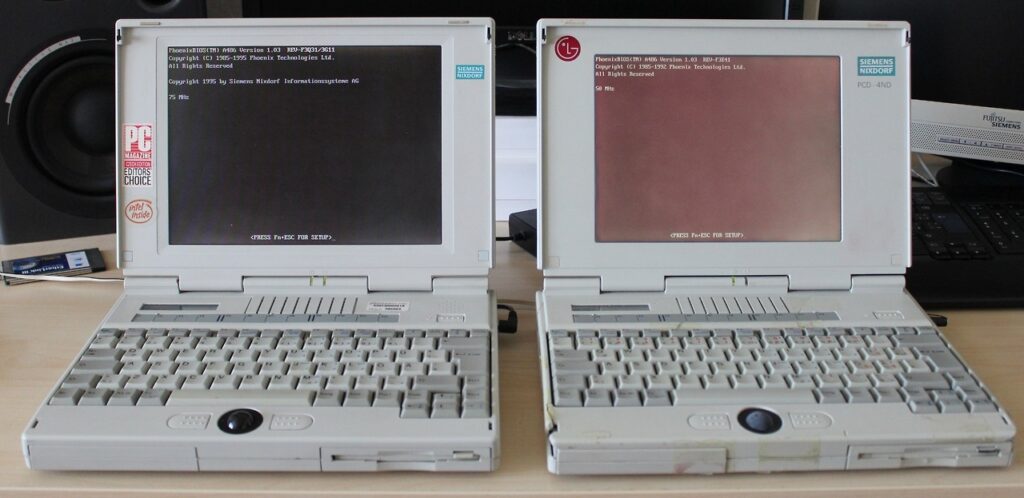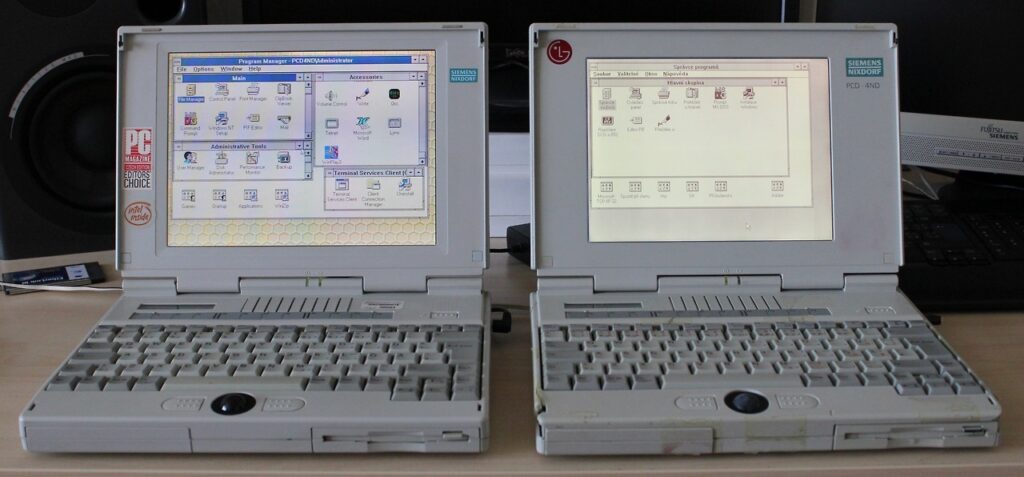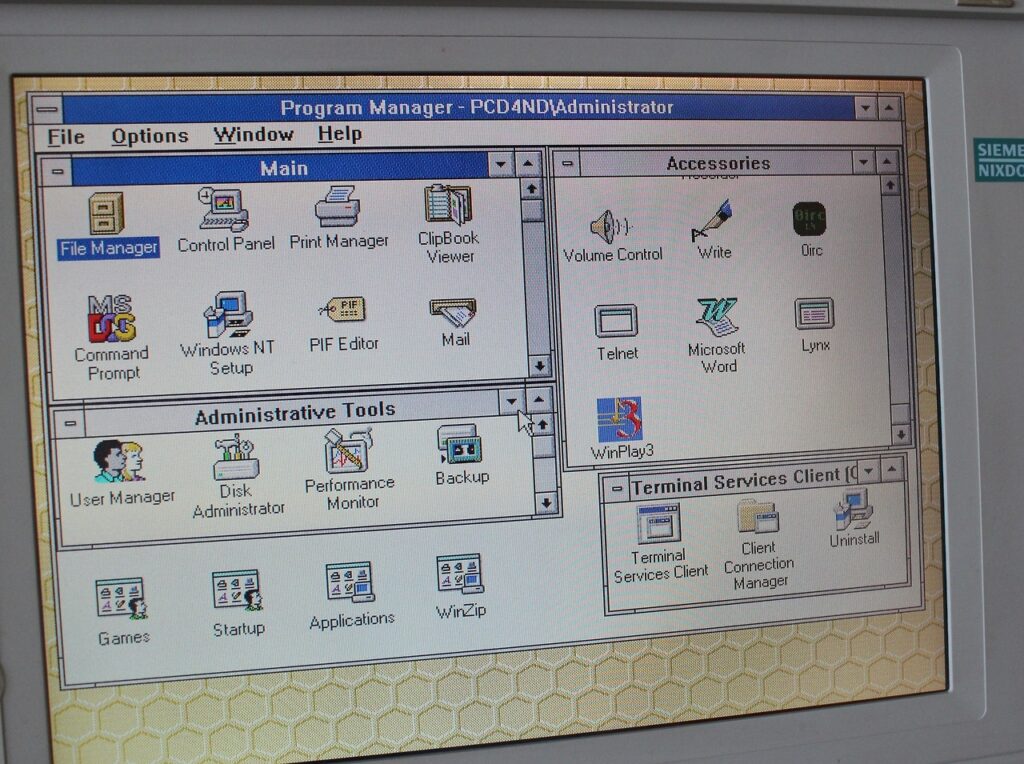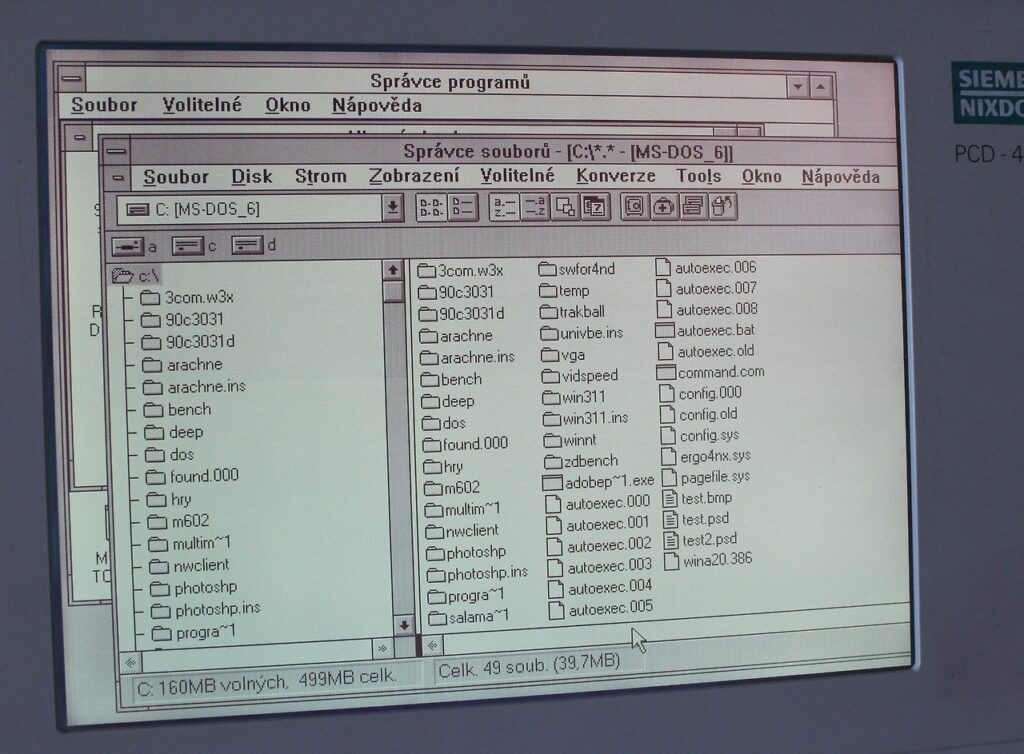Switching from passive-matrix to active-matrix LCDs was a big deal for many. However, not everybody in the mid-90s had enough money to afford a color TFT panel in a new laptop as the price premium was still about $1000. Color passive-matrix screens were a solution for those with tight budged.
640×480 monochrome passive-matrix screens needed about 1.800 transistors to control all pixels (n*2+m for dual-scan). Color active-matrix screens (TFT) with the same resolution needed 300.000 transistors as each pixel is controlled by three transistors (3*n*m). That’s why these screens were so expensive.
Color passive-matrix screens (DSTN) were a good low-cost alternative for everybody who wanted colors “on the road”. This technology needed only about 5.000 transistors for the resolution of 640×480 (2*3*n+m). The result was not exceptional but it was good enough for many productivity applications where slow response rate (300-700 milliseconds) was not a problem.
Unfortunately, quality varied a lot between DSTN screens. Although some had a very crisp picture with shiny colors on par with today’s cheap TN panels, some suffered from significantly poorer contrast, washed colors and color bleeding.
The machine on the right is in fact my first own PC compatible laptop. I hated the screen so much back then and I envied others their color-screen portables. The machine on the left has the best DSTN panel I’ve ever seen in the laptop. Although both machines use the passive-matrix technology the difference in picture quality is huge.
UPDATE: (1) I was not completely right with the transistor counts – for passive-matrix displays, there will be at least twice as much transistors (one on Vcc and one on GND for each row/column to output both logic levels 0 and 1). (2) I also forgot to mention that passive-matrix screens don’t have transistors in the panel itself. There are special chips on a separate board which makes the solution much cheaper in comparison with TFT (which has multiple layers with tiny transistors inside the panel).



